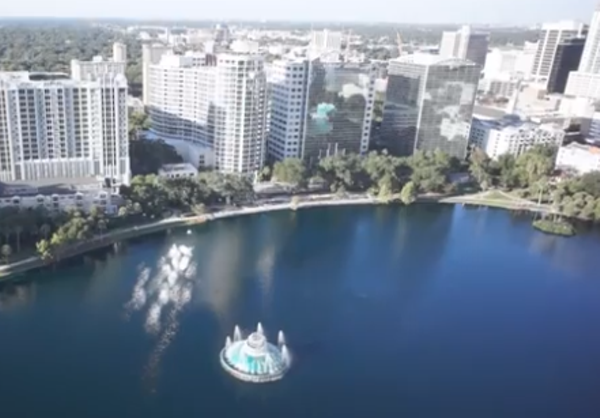When we work with clients, we are always thrilled when they have reliable pedestrian count data. This information makes it much easier for us to quickly understand what kinds of businesses an area can support, and when combined with market data, allows us to better understand the market forces that will result in thriving businesses.
Pedestrian counts (or "ped counts" for short) are perhaps one of the most valuable metrics for commercial district practitioners looking to attract quality retailers. Ped counts help us understand how people move through commercial districts and reveal actual peak hours and peak days, which can inform a variety of decisions, from business hours to the business location for different retailers.
Thanks to recent improvements in sensor technology, costs
are decreasing and making pedestrian counts an increasingly attractive tool.
Below is a comparison of three of the most popular suppliers in the market today, which we've summarized in a simple chart.
Motionloft is a US based data service provider specialized in pedestrian and vehicular counts. Its proprietary-owned sensor technology can track pedestrian and vehicular traffic in real-time. Sensors can be installed indoors or outdoors and require access to power and a clear line of sight.
Reports include data summaries showing peak hours and days,
and allow real interaction with the data (letting clients set parameters based
on time, location, weather and direction of travel). Clients can choose between
short-term (1 month) and long-term studies (1+years). The cost per sensor for a 1 month study is $1,800 and $3,300 for a year study. The cost includes installation and
calibration of the sensor(s), 24/7 access to data through the company’s online
dashboard as well as reports in both pdf and excel formats.
Springboard is a British-based service provider specialized in pedestrian, vehicular and
sales data. Counting devices monitor pedestrian and vehicular traffic in
real-time, and are installed on buildings or lighting columns that provide access
to power and a clear line of sight.
Data is delivered through reports, daily feeds and through Springboard
Analyser, the company’s web-based analysis tool. Reports include data summaries
showing peak hours and days, and allow some customization (based on time,
location, weather and direction of travel). The cost for a 3yr study (the
minimum recommended by the company) is $2,250 per sensor per year (without the
cost of the 3G network, which is $600/yr). It is important to note that Springboard
counters, depending on the location installed, have the capacity to track more
than one intersection with the same counter.
Eco Counter is an
international provider of pedestrian and bicycles counting systems. Unlike the
previous suppliers mentioned, the firm manufactures and sells counting equipment
and accompanying data analysis software. The company offers two main sensors for
counting pedestrians in urban environments: the Pyro Sensor and the Citix. The
Pyro has two formats, the Pyro-Box or the Pyro in an urban post. The Pyro-Box
Sensor comes in the form of a box that is installed at some pole or lighting
column. It has the advantage that is can be moved (without the need for
additional calibration). The Pyro in an urban post comes in the form of a metal
short post that is affixed to the pavement. Both counters track pedestrian
movement in both directions 24/7. Both Pyro models are battery operated and
come with a 10-year battery life. They cost $3,500 and include installation,
web-based analysis software with customization options, a public web-page for sharing the data as well as
a widget that can be integrated to your district’s website.
The other model, recommended for high traffic areas, is the
Citix. Citix is an overhead mounted counter that requires on-site power. It counts pedestrian movement 24/7 in
both directions, but the overhead feature makes it suitable for high traffic
areas that require more precision. Citix
costs $5,000 and also includes installation, web-based analysis
software with customization options, a public web-page for sharing the data as well as a widget that can
be integrated to your district’s website.
How can you tell which service works best for your district? First, it depends on your traffic volume, district size and budget. Second, it also depends
on your capacity to use the data strategically and ensure that the investment is worth
the cost.
Motionloft is the only supplier with a short term option.
Its 30-day study option can be used as a trial that allows you to test the waters and see
how to use ped counts to measure overall trends in your district. This shorter option is also useful when you’re dealing with a very limited budget or when
you need immediate information for a market demand update but you’re not ready
for a long-term commitment.
Springboard brings longer experience with ped count data and
the counts are often part of a larger comprehensive set of services that
includes retail sales and other metrics of district evaluation. Also, Springboard sensors have the advantage
of tracking more than one side of an intersection, which means that you’ll need
fewer sensors for more complex and heavy trafficked areas. Larger districts
with larger budgets such as Times Square Alliance and Grand Central Partnership
have been using Springboard for ped counts quite successfully.
Eco counter seems to be the most affordable option for
long-term continuous counts. The cost of its cheapest sensors (the pyro) are similar to Motionloft’s 1-yr study and cheaper than Springboard’s 3-yr study. Plus, you can move them around and count different sections of your corridor without the need for recalibration. It
is important to keep in mind that pyro sensors are only recommended for medium
trafficked areas. Busier districts will have to get the more expensive
equipment, called Citix. However, having your own sensors brings other issues, like assuming the risk of any equipment damage
caused by vandalism or natural causes (hurricanes, etc.). All things to consider...
We think that all three offer excellent service - but are different enough that the best fit will depend on your needs and capabilities.






